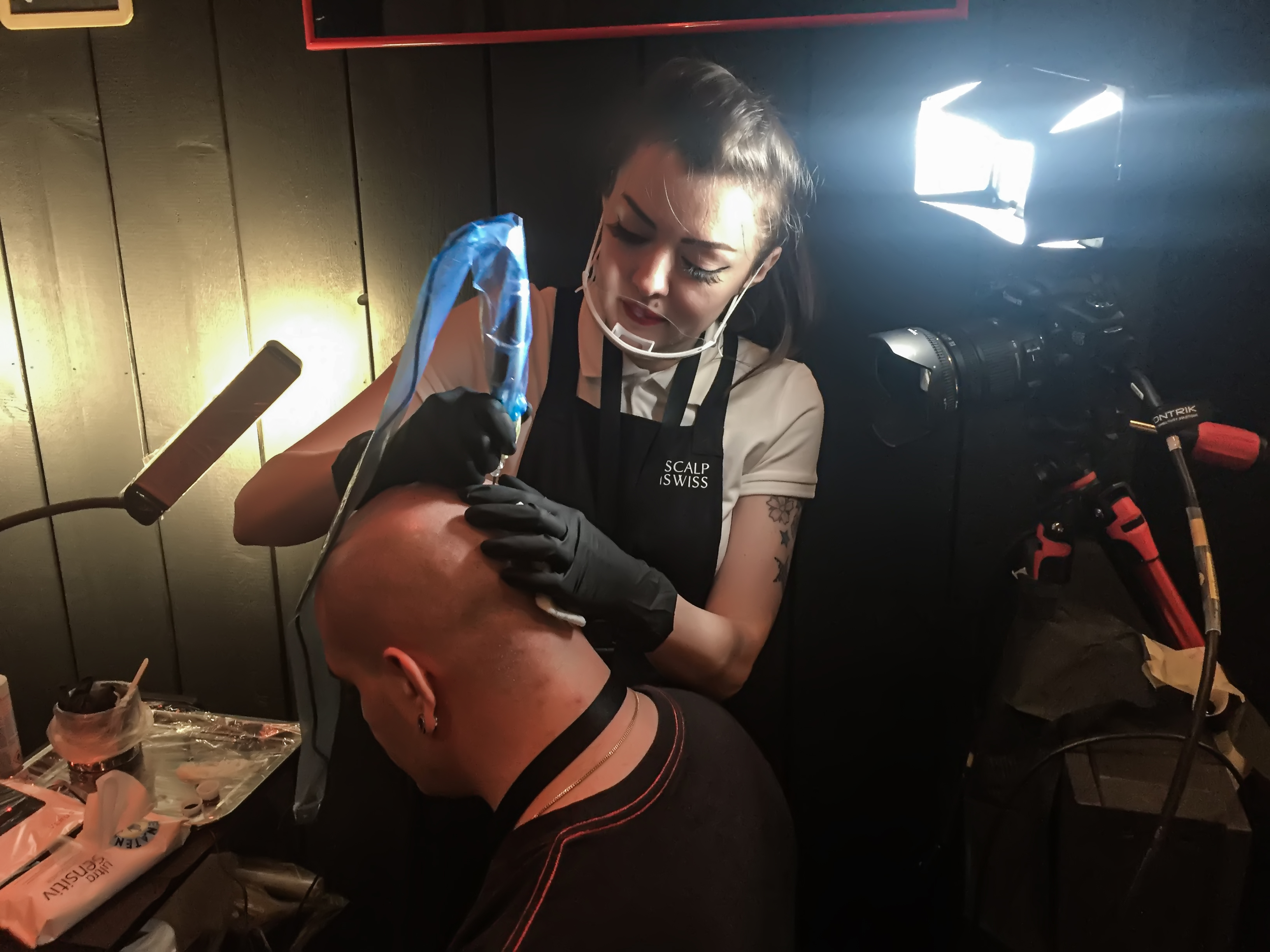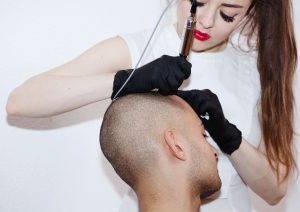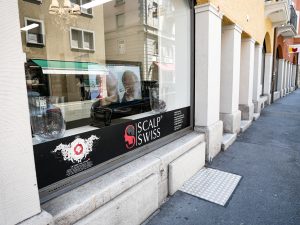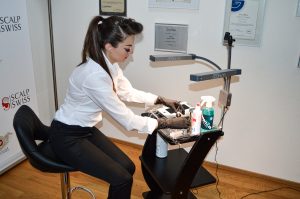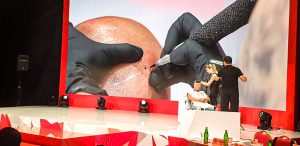Interview with the founder of a startup that revolutionized the airline industry through computer vision.
Viktoria D'Angelo
Skin pigmentation artist, creator of several brands, international speaker and trainer.
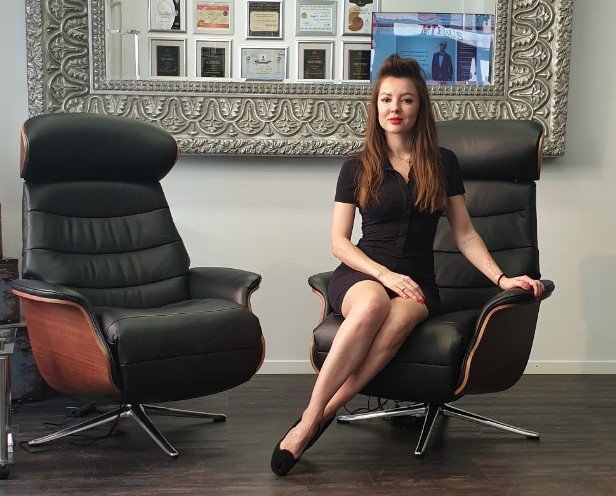
How to build a successful beauty business? What qualities should a beauty expert have? Why ignore competitors when developing your own business?
Viktoria D’Angelo is a skin pigmentation artist with over 15 years of experience and founder of the Scalp Swiss brand, which solves the problem of hair loss with the help of scalp micropigmentation. She is also owner of two studios in Lucerne, creator of her own techniques, and an international speaker and trainer. In this interview, Viktoria explains why she is no longer afraid of new projects, how it is necessary to constantly learn, and why it makes no sense to regret mistakes.
1. About the first professional steps and career development
Dear Viktoria, we are currently sitting in your new studio. Can you say that you are doing exactly the work you dreamed of as a child?
I was always interested in everything unusual and mysterious, so as a child I dreamt of working for the criminal police. I was also interested in needlework, which probably came from my great-grandmother, who sewed clothes for church servants, embroidered and made unusual tablecloths. She created such incredible patterns that some of them are engraved in my memory forever. That’s why I passionately learnt everything about craftsmanship: macramé, knitting, and sewing.
So has handiwork always been your calling?
I think so, yes. You know, even when I moved from the Ukraine to Switzerland in 2000, I got a job in the quality control department of a watch factory. I was hired for a few weeks, but then they wouldn’t let me go because I carefully examined every little detail of the mechanism so I noticed every mistake. I guess I’m a born perfectionist.
Almost from the very beginning, I was involved in nail services in parallel with my work. At that time, in Russia and the Ukraine, there was a real boom in this field; there were such incredible designs that I wanted to learn all about it and bring everything I had learnt to Switzerland, where it didn’t exist yet. After finishing my studies, my career quickly escalated. I registered the company, and pretty much immediately customers came, so very soon I worked six days a week from morning until evening, so high was the demand. I had clients from all the cantons of Switzerland, Zurich, Basel, Bern and even Ticino. At the same time, I started receiving training requests as many people wanted to learn these techniques.
Sounds like a very successful start. So, why did you change your sphere and switch to tattoos?
In 2005, there was a turning point. I took part in a nail design competition where the main criterion was creative design. I worked hard, estimated every minute and created an absolutely unique, very complex nail design in Chinese style. Unfortunately, I only got the 2nd place and found it somehow unfair, according to the quality of the work. That made me very sad and demotivated.
I also felt that working with nails had become too easy for me, so that I could do everything ‘with my eyes closed’. I wanted new challenges and the more complicated the better. At that time, my ex-husband learned tattooing and persuaded me to join him. So, I hired a new employee, trained her in nail services and then switched to tattoos.
There was such a nice feeling of pride: tattoo! It sounded so cool and so prestigious because it was just starting to become popular.
Was it hard to change sphere, and was it frightening to start working on the skin?
The difficulty was to find courses and training: then, all the artists kept their techniques secret and did not want to share them. We studied abroad because nobody there saw us as competition. And no, there was no fear; on the contrary, it was very interesting. First of all, there were no 3D designs as great as there are today, everything was much simpler. And second, there was such a nice feeling of pride: tattoo! It sounded so cool and so prestigious because it was just starting to become popular.
How long did it take you to learn all the subtleties of a tattoo?
The learning never ends: you constantly improve and learn new techniques. The longer and harder you work, the better the quality. Now, of course, I can do even the most challenging things.
But you didn’t stop with the tattoo; you started to learn other techniques of skin pigmentation. Why?
I have been interested in permanent make-up for a long time. But with this I felt a special sense of responsibility because it is carried out on a person’s face. And again, it was difficult to find a good education; the information had to be collected literally in small parts. But since I had experience in tattooing, I knew which questions to ask and what to learn.
I studied everywhere I could: professional training, courses, and seminars. A few years ago, the quality of permanent make-up radically increased; it can’t be compared to what it was at the beginning of the 2000s. And I started to greedily learn all kinds of techniques: I probably attended about 100 training courses; every month I flew to other countries. I was interested in different types of pigmentation: not only tattooing, but also camouflage, areola, and scar stretching. I wanted to perfect the quality of my work, and in the end it turned out that I also learned to train.

Speaking of quality, what do you think a skin pigmentation specialist should be like?
They should have a sense of beauty and give every customer the best they can. They should constantly improve their skills, because techniques are always evolving, and in no circumstances should they stay at the level that they were at five or ten years ago. The quality of the tools and machines is also very important: they must be reliable and hygienic. And sincerity is especially important. It is always necessary to inform the customer, in detail, and honestly about the process and its particularities. And if you know that you cannot do what the customer expects you to do, you must say so directly.
2. The creation of own brand and the entry into the new niche
Let’s talk about the launch of your brand, Scalp Swiss: How did you create it, how did you come up with the idea and why did it fascinate you so much?
I’ve been familiar with the technique of scalp micropigmentation for a long time; I’ve taken several courses and studied detailed scientific literature. But at first I wasn’t particularly interested in the topic.
Four years ago, at one of the conferences, I listened to a very interesting presentation that really captivated me. The speaker spoke about the statistics of procedures in the field of beauty and how much of their share is taken by solutions to combat male hair loss. This is not only an aesthetic problem, but also a psychological one. At that time, micropigmentation already accounted for 20-30% of all treatments performed in this area, because it does not require surgery, leaves no scars and looks very natural.
The idea really fired my imagination and I literally couldn’t think of anything else. The very next day after the conference, I was sitting at the airport developing the brand concept, buying a domain name for the website and looking for someone to further learn from.
Then you found the famous American artist, Matthew Iulo?
Yes, and I immediately invited him to Switzerland to carry out the training for my entire team. He gladly agreed and flew to Lucerne in December 2015. In general, everything developed at an incredible pace: we were working on the branding, creating a website, writing texts and preparing for the exhibition. I never left the studio before midnight because I was constantly studying the subject, practicing and working on the project. Sometimes I only slept for two hours – I was so fascinated by the topic and obsessed with the business.
Participating in the exhibition is a very important step for the presentation of your own brand. That’s why you either do everything perfectly or you don’t participate at all.
You mentioned the exhibition – what kind of exhibition was it and how did you get there?
By chance, my friend’s husband told us about Man’s World Zurich. It was mid-December and the exhibition took place from January 30 to February 2. Usually, you start preparing for such events six months in advance, but we were determined to do it in a month and a half. I’m still surprised how we did it because we had just started the project; there were a lot of unfinished tasks and the whole process of preparing for the exhibition. And all this happened over the New Year holidays…
Why didn’t you postpone your participation in the exhibition by one year to give you more time for preparation?
The scalp micropigmentation treatment in Switzerland was still poorly known, and I knew that in order to widely spread this information, we had to communicate it loudly to our target group. And Man’s World is the perfect exhibition for us, both in terms of format and audience.
But to be honest, I didn’t really realise what was awaiting me in terms of preparation. Of course, I’ve been to several expos, but I’ve never been a participant and never made my own stand. Participating in the exhibition is a very important step for the presentation of your own brand. That’s why you either do everything perfectly or you don’t participate at all. We wanted to bring everything to the maximum and we achieved it. But I still don’t know how we managed to do that.
How did everything work out? How did the visitors react to your stand?
The exhibition went very well: people approached us, asked us questions and reacted very positively. Every day we staged live shows that generated a lot of interest. Everyone wanted to see how it was done and what the result looked like.
Then we were shown on television; articles were written, and interviews were conducted. The exhibition really boosted our development. Now we take part in Man’s World every year; we’ve already been to three exhibitions, and every time it gets even better and more interesting. This winter, for example, we were visited by many of our customers with completed micropigmentations. They did this voluntarily simply because their lives had changed for the better, and they wanted to share their positive experiences with others, to demonstrate the real result.
3. What is Scalp Micropigmentation?
Speaking of change for the better: What are the advantages of scalp micropigmentation over other hair loss solutions? For whom is this service particularly suitable?
Micropigmentation customers can be anyone who suffers from hair loss. It can be applied to optically conceal areas with thinning hair or to create a 3D shaving effect. In this case, we draw and pigment the frontal hair growth line again and then fill the rest of the space up to the back of the head with micro dots in several shades. Of course, not everyone needs it. Adult men who lost their hair some time ago are usually quite satisfied with their appearance and feel comfortable. But young people who experience a problem at just 23-24 years old often cannot accept it. They suffer due to this problem and are actively looking for a solution.
Micropigmentation is good because it does not require surgery, it heals very quickly (redness disappears the next day and you can go to work immediately), looks very stylish and natural and does not require complicated care. We use microneedles and special pigments in shades of grey, which are individually selected for each client and allow us to achieve a very realistic effect.
However, the skills and talent of the expert are indispensable for this, aren’t they? If I understand correctly, do customers often come to you to correct mistakes made by specialists from other studios?
Yes, and I really feel sorry for them because they wanted to solve the problem, but it only got worse. For example, people often come who have tried micropigmentation from a tattoo artist, and who thought that since he or she made great tattoos in a realistic style, this task would be easy for them. But the fact is that no matter how talented the tattoo artist is, micropigmentation is a completely different treatment.
We use much thinner needles, we don’t work with black pigments, and we use a special technique that makes it possible to create natural hues and transitions. It is also very important to understand the specifics of the skin: the scalp is very specific and can vary greatly in different areas, even for the same client. Therefore, you need to be able to see this and change the technique and needles depending on the area.
I never look at the competition; I have no time or desire to do so. I only let myself be guided by those professionals from whom I want to learn something, up to whose level I strive.
How do your customers react to the results of micropigmentation?
They are extremely happy, and that is what motivates me most – an opportunity to help them solve a real problem that has plagued them for years. My very first customer suffered from thinning hair after she gave birth to a child and was so worried that she practically didn’t go outside anymore. After the treatment, she literally cried with happiness and kissed my hands. I will never forget it.
Or the young guys who lost their hair very quickly and got such a complex that they didn’t take off their caps, even inside. After the treatment they literally expand their shoulders and felt self-confident again. So I see that my work is very valuable on a personal, psychological level and it fills me with energy.
How has the market changed today; has the service become more popular and well-known? Do you have many competitors?
Now there are always more specialists and studios, and the service has become popular and famous. Competition – yes, everyone has it, so what? Every specialist has their own style and their own customers. I never look at the competition; I have no time or desire to do so. I only let myself be guided by those professionals from whom I want to learn something, up to whose level I strive.
4. Business tips: about team, mistakes and fears
Your constant self-development has already brought you to a new level: you are now also an international trainer. Why did you decide to do it?
This is the other side of the growth of popularity of micropigmentation services. Demand creates supply, and now this service is offered at every street corner and is often not the best quality. As more and more customers with bad micropigmentation came to me and asked me to correct it, I realised that it was time to offer training courses based on really good technique.
Now you’re regularly conducting training sessions. Where are they held and what do they include?
My courses offer an intensive programme that includes detailed theory and practice. By the end of this year, I have already planned 11 training courses in different countries: Germany, Italy, Spain, Portugal, America, Canada and so on.
Let’s summarise: You have three brands, you work actively with customers, you have 11 training courses planned by the end of the year, a studio and a team. How do you manage all this?
This year was particularly intense because we moved to a new studio, renovated and started training. At the same time, we don’t have any sponsors, and I never take out loans on principle. I try to make the most of the resources available to me.
Unfortunately, my private life suffers. As one of my acquaintances said, the work is very jealous, it does not tolerate competition. So you have to either fully focus on it or leave it. At the moment I am dedicating myself to the job. But I hope I can balance my life over time. Now I’m trying to learn how to delegate; I’m already taking my first steps in that direction.
What are your plans for the future?
First, improving the industry through training. I want there to be as many experts as possible who will make micropigmentation of high quality. I have also planned to start another interesting project in December this year, but I can’t reveal any details yet. Finally, I want to franchise and open several studios under my own brand in other cities – in Zurich, for example. I will look for and train experts so that they can work with my technique and at the high standard I need. It is also important to me that the person is suited to me on a personal level.
And what exactly do you value about people? Which employees do you choose?
It is necessary to have a positive attitude, a desire to learn and a wish to develop. I also prefer independent people who don’t need to be controlled and dragged along. In general, I need people who always try to be better and more advanced, then we will reach every peak.
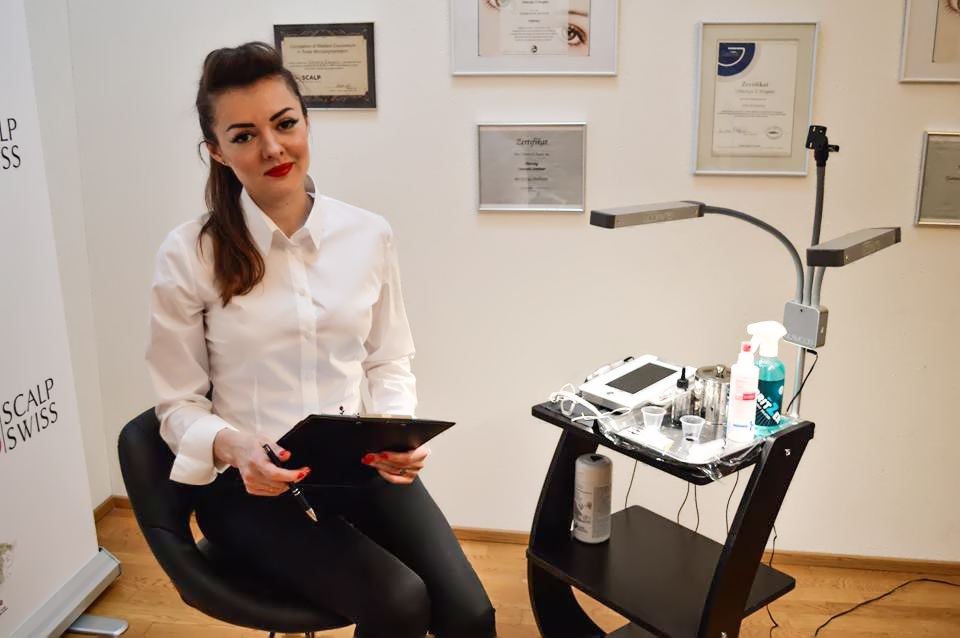
What do you believe in in life? What motivates you?
I believe in myself and I believe that everything will be good. I haven’t been afraid of new projects and new business for a long time because I’ve been through all this. Of course, the very first steps are always thrilling. It doesn’t matter if it’s the first training session or the first performance on stage, as soon as I take the first step, the fear disappears.
Have you made any mistakes in your entrepreneurial life that you regret or would like to avoid if you had a second chance?
I have no regrets. Every mistake is not a mistake, but an experience, and it helps you to move forward. Well, what can you regret? It is impossible to know in advance. In every moment of time you act on the basis of the knowledge accumulated prior to that moment. If something hasn’t worked, then it’s time to try a new tactic; to educate yourself.
What advice could you give to beginners or those thinking about starting their own business?
Put your fears aside, because they are only fears, not reality. To have a goal in mind and to follow it. It doesn’t matter how fast or how successful you are, because it’s a process and it’s interesting. Of course, we want to reach our goal, but on the way, we can open new perspectives and it is important to recognise them. That is why we should put aside our fears, move forward and never give up.
Thank you very much for the interesting conversation and inspiring advice! We wish you every success with all your projects!
VICTORY INK SWISS CONTACTS
Learn more about the projects of Viktoria D'Angelo:
Website: http://victoryinkswiss.ch/
Facebook: https://www.facebook.com/viktoria.dangelo
Instagram: https://www.instagram.com/victoryinkswiss/
Instagram ScalpSwiss: https://www.instagram.com/scalpswiss/



